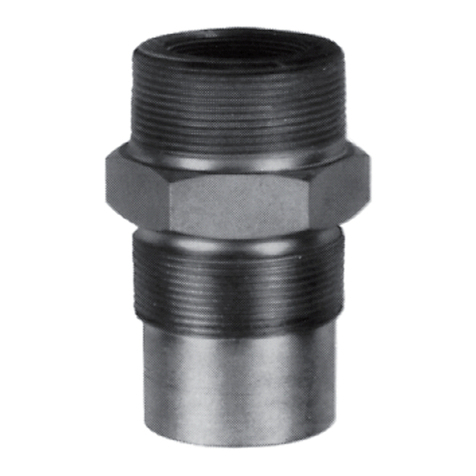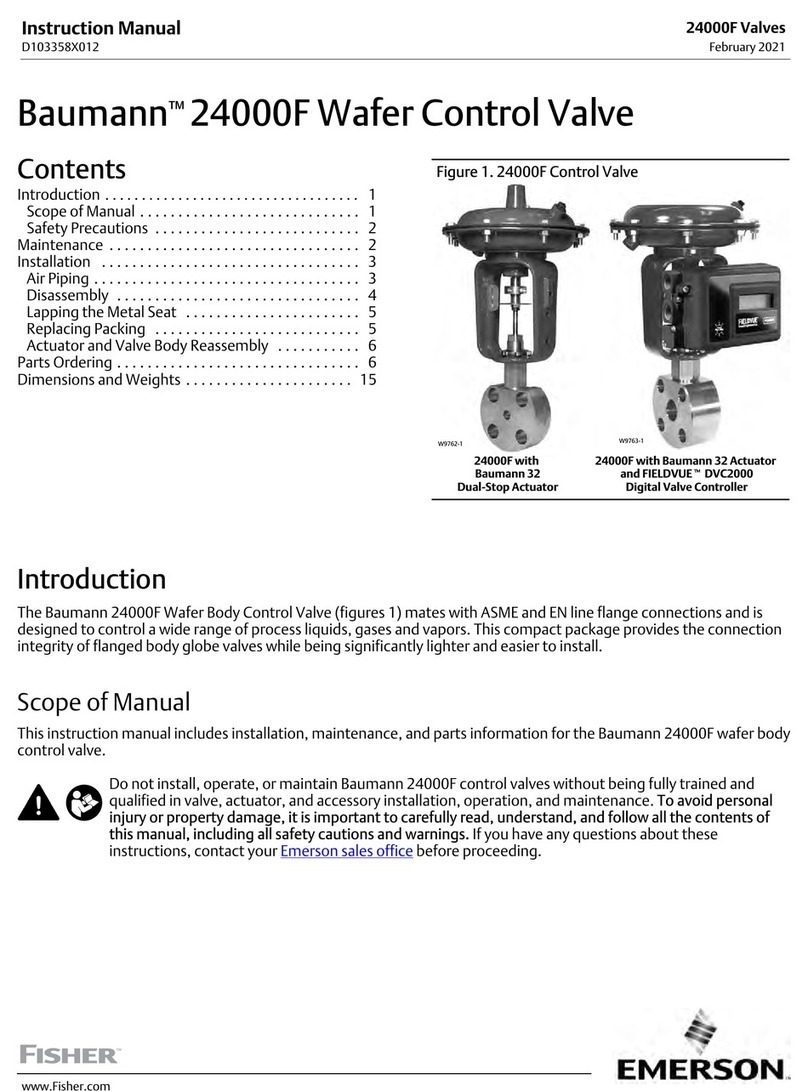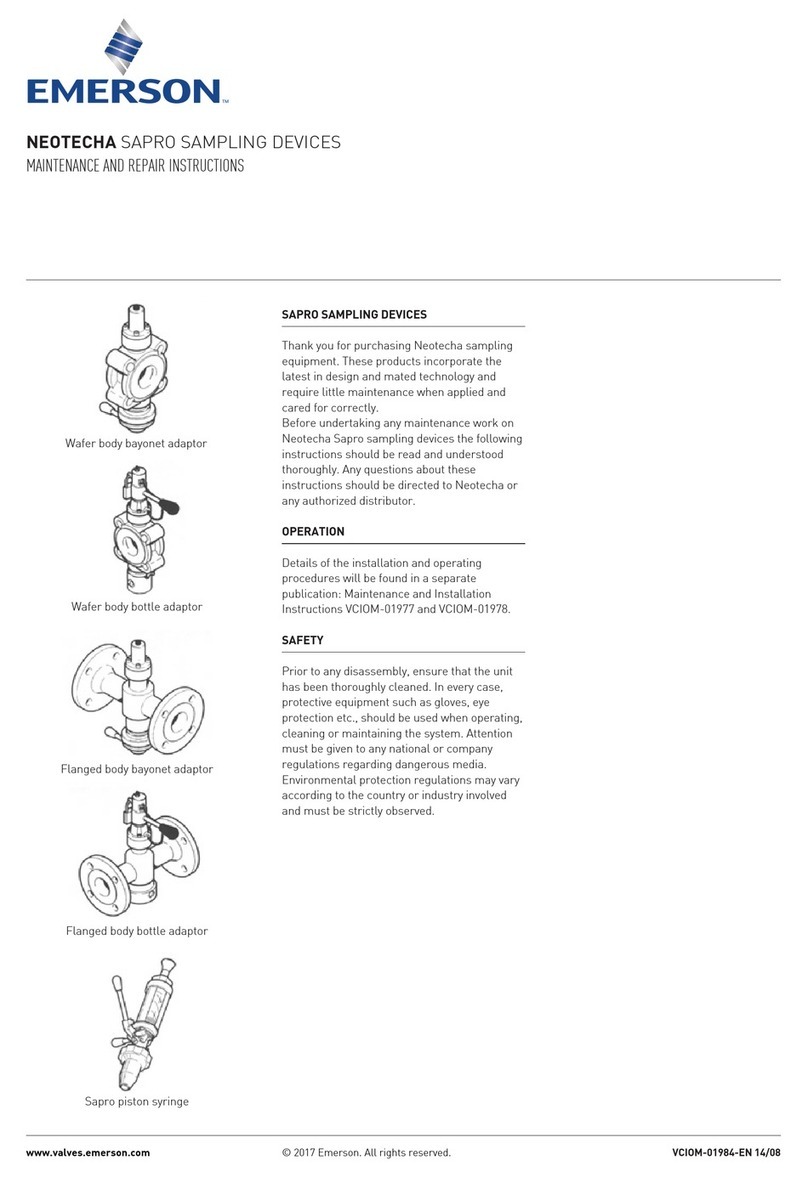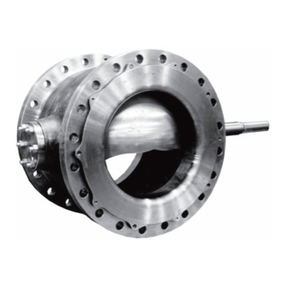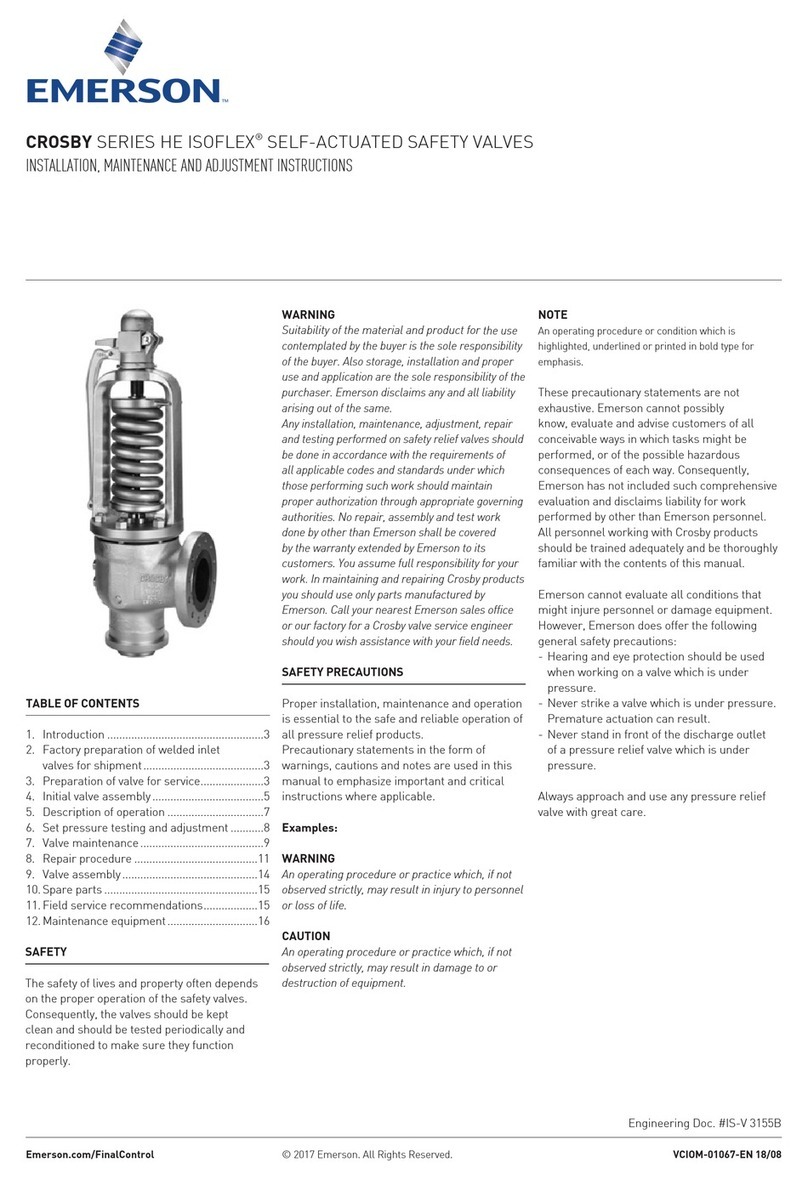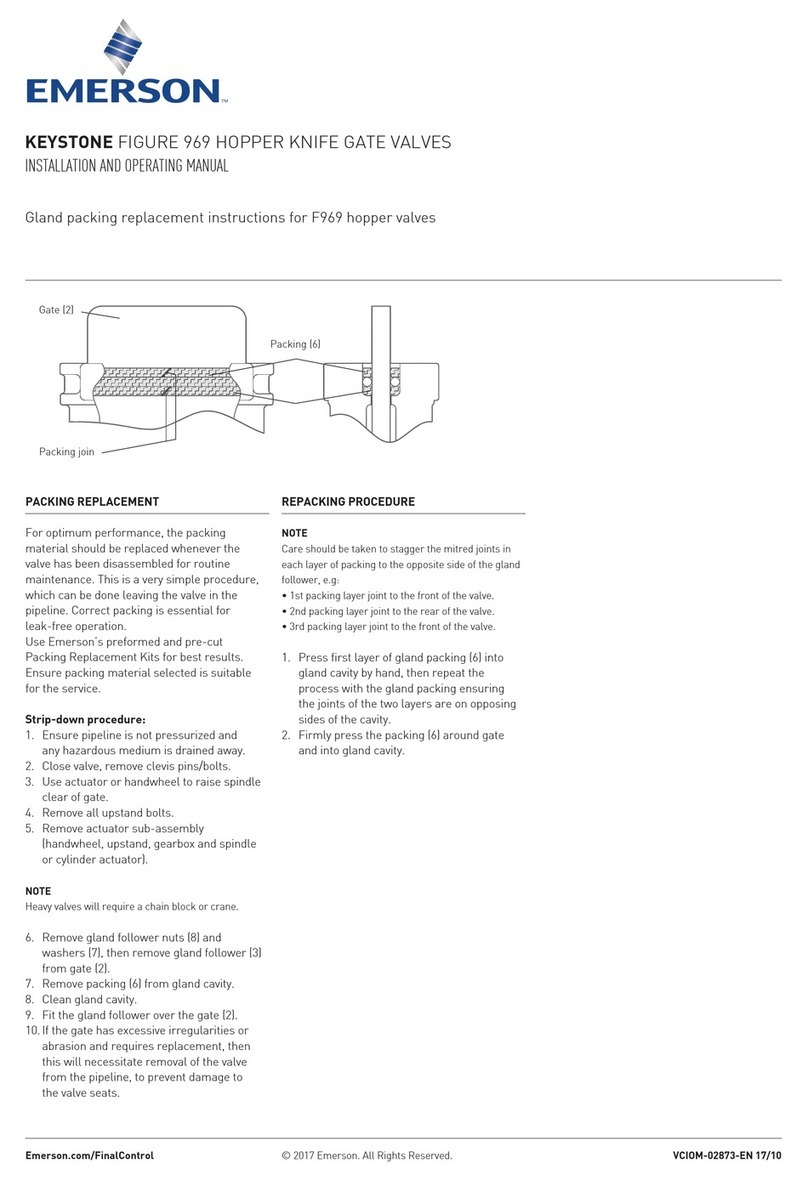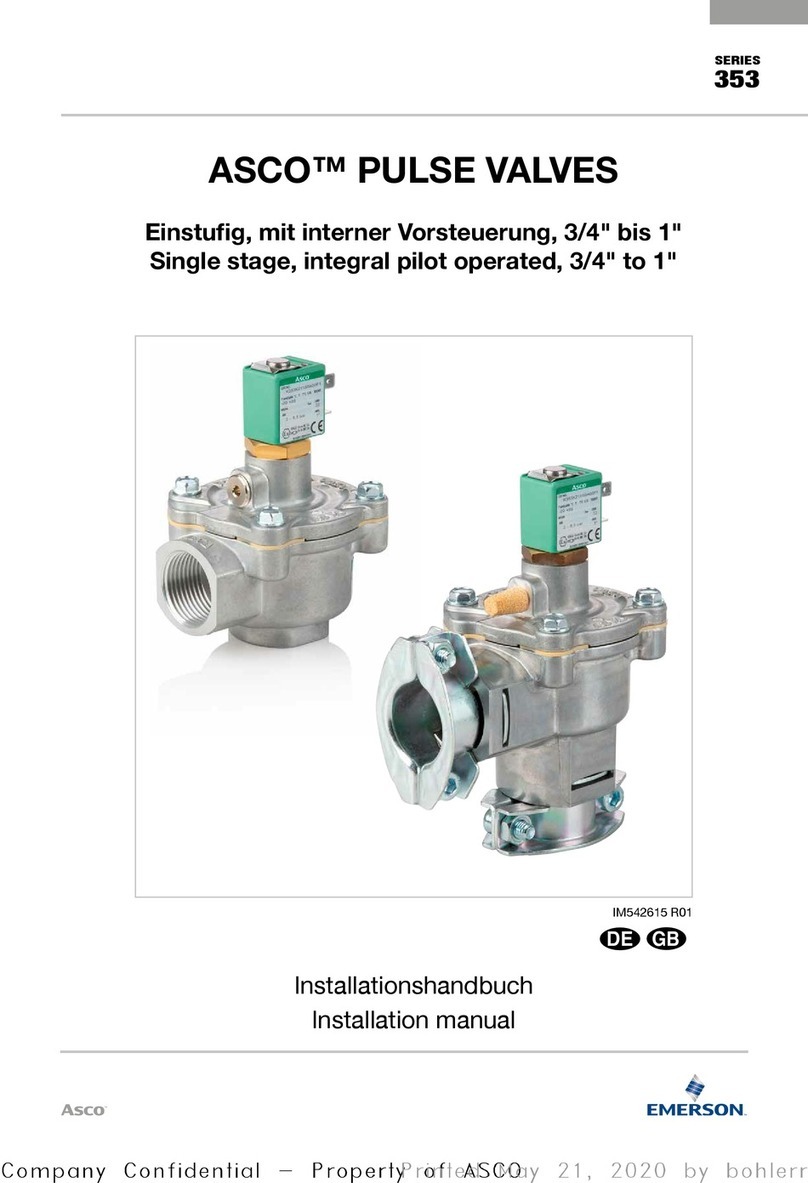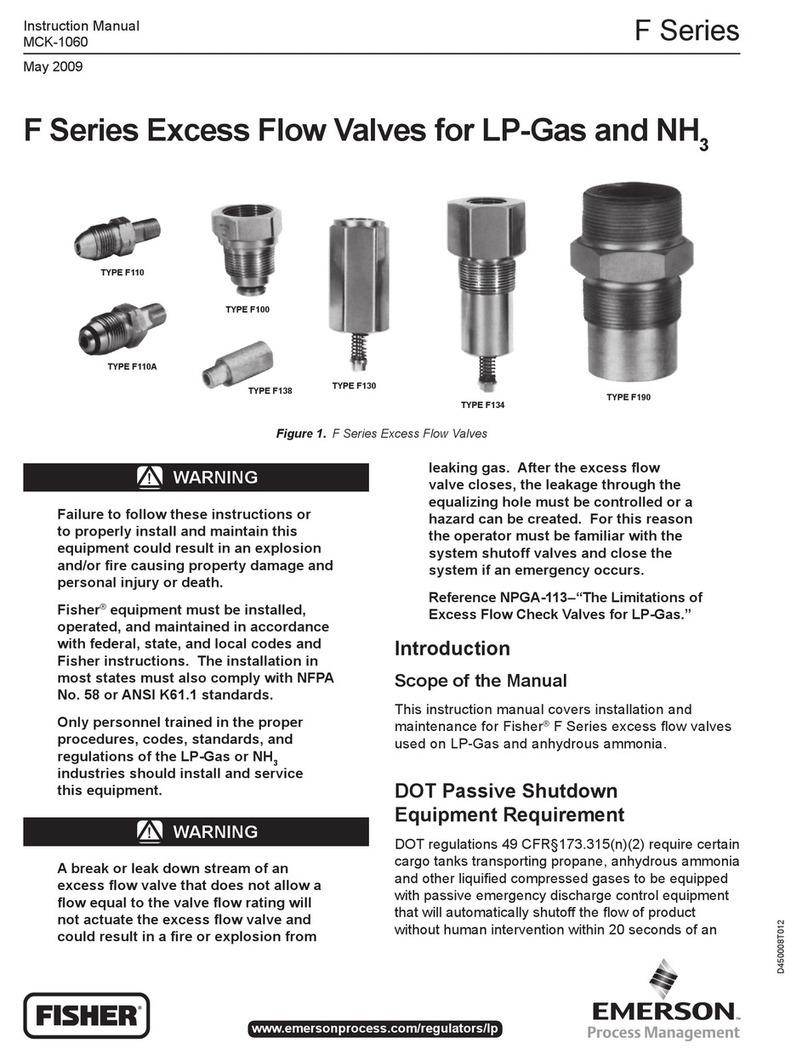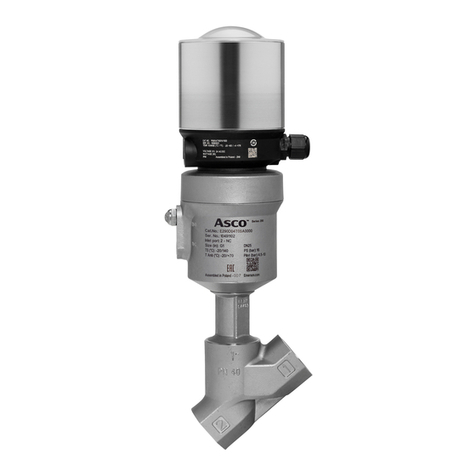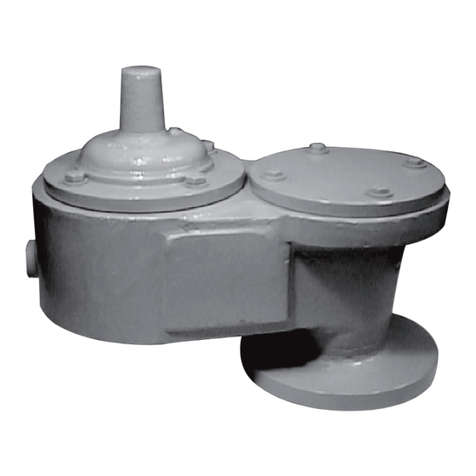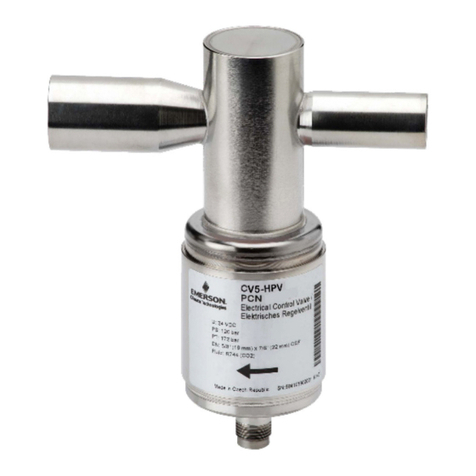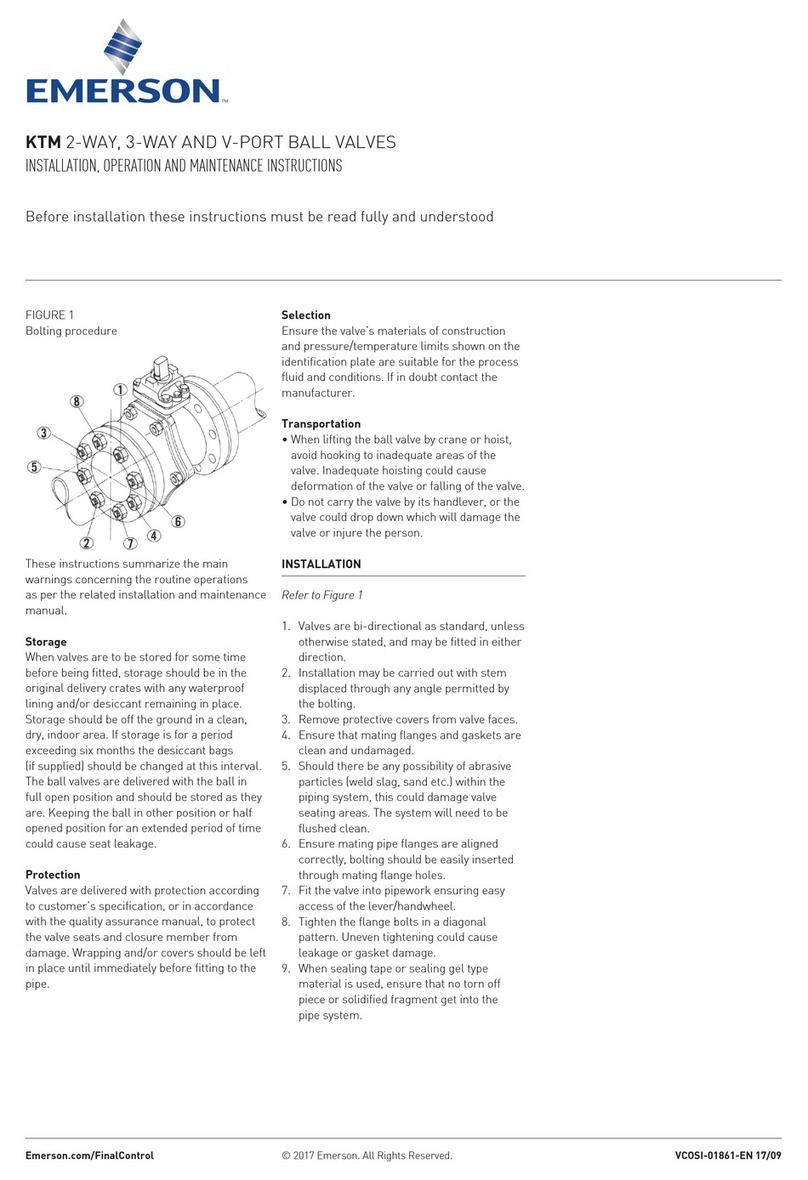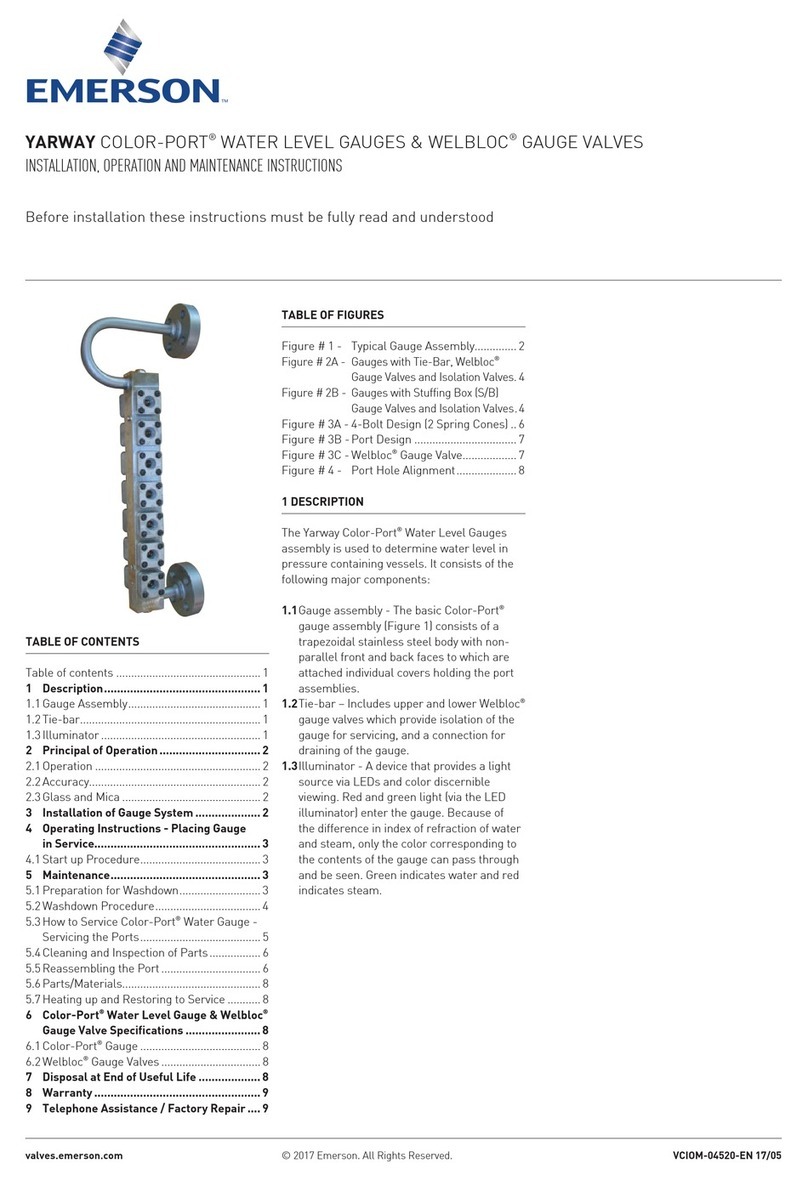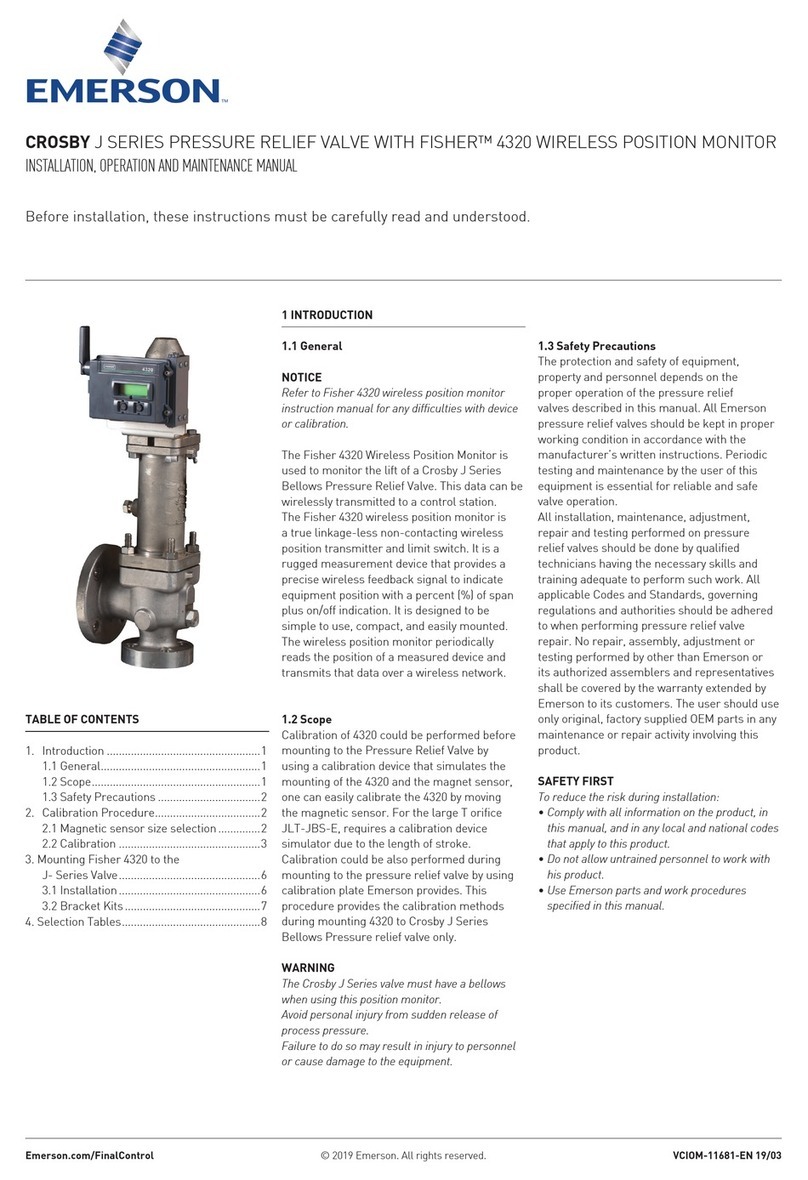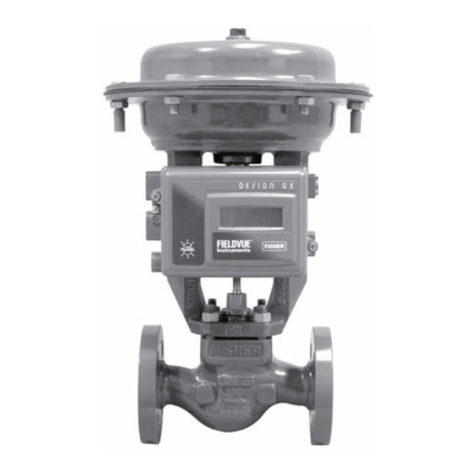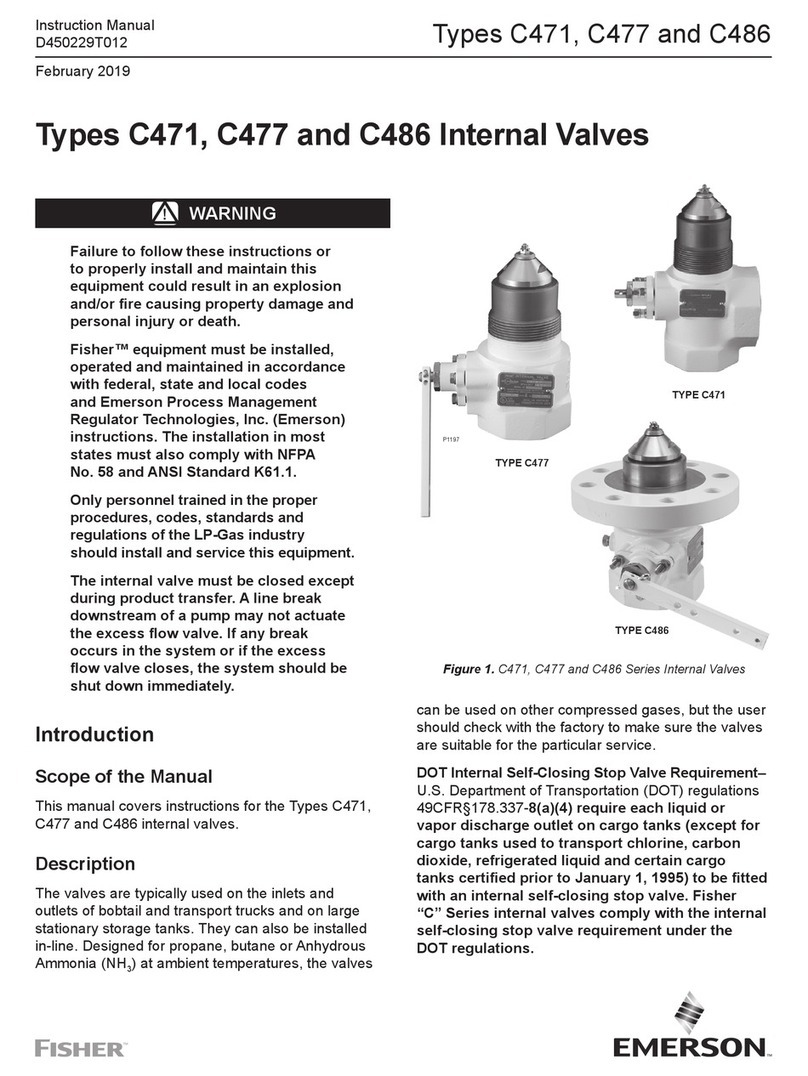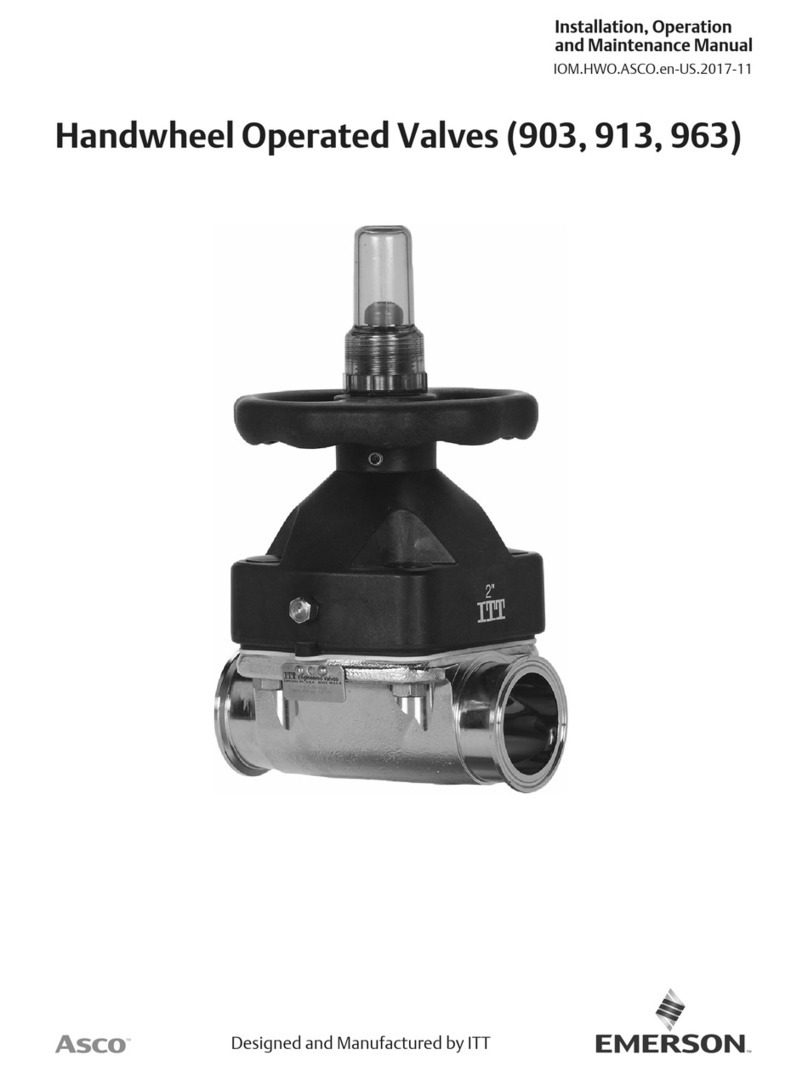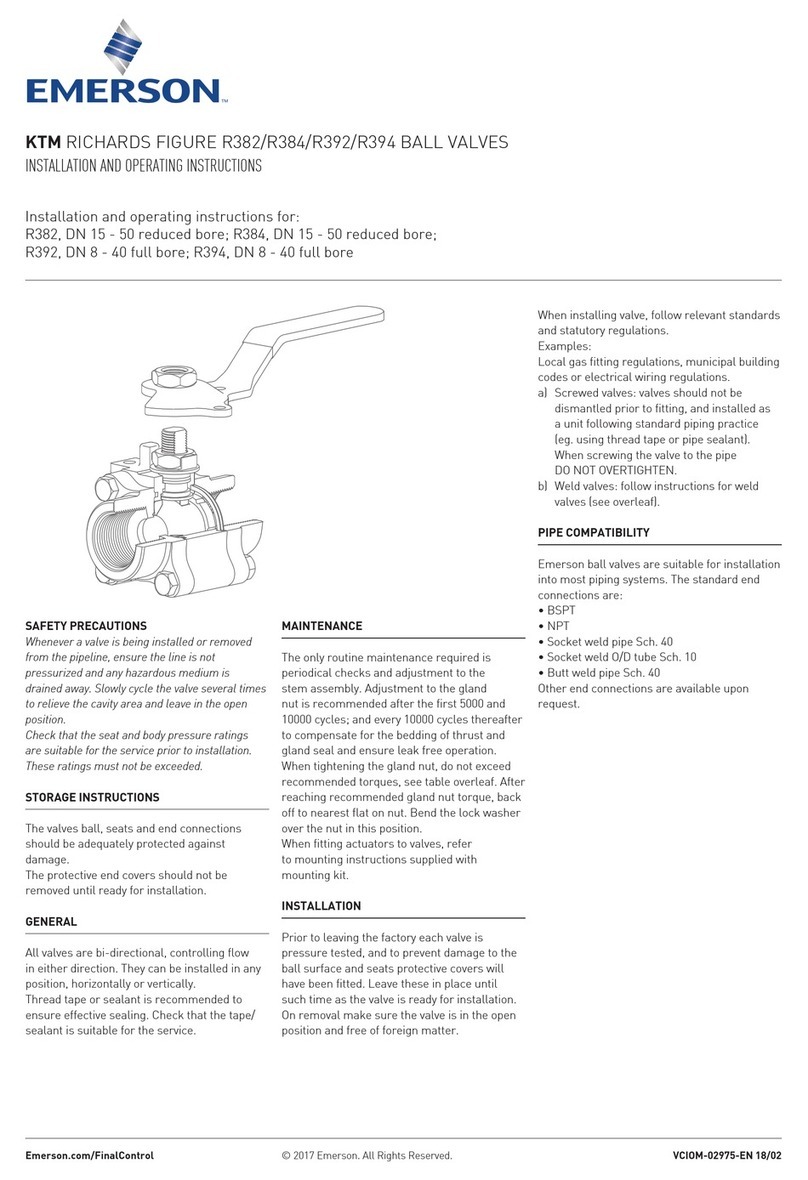
4
SEMPELL SERIES VSE 0 SAFETY RELIEF VALVES
Operating instructiOns
3.3.3 Exhaust line
In no case the exhaust line diameter must be
smaller than the outlet nominal size at the
safety valve.
Back pressures in the exhaust line are
admissible up to 15% of the set pressure
ATTENTION
Higher back pressures may lead to an unstable,
uncontrollable behaviour of the safety valve;
chattering or vibrating may destroy the valve seat,
the safety valve or the pipe and thus lead to failure
of the safety function or to shutdown of the plant!
At the deepest point the exhaust line must
be equipped with a drain which is big enough
to discharge minor leaks, e. g. in case of
untight valve seat. Particularly in the open air
exhaust line, valve body and drain must be
protected against icing and freezing, e. g. by
(electrical) trace heating; merely insulation is
not sufficient!
Recommendation! Sound isolate exhaust line
and/or provide the same with silencer; in doing
so, regard allowable back pressure!
ATTENTION
An icy, frozen or clogged exhaust line leads to the
failure of the safety function! Danger of explosion
in case of excess-pressure!
CAUTION
In case of several safety valves with one common
exhaust line, take special safety precautions for
disassembling of only one safety valve to exclude
danger in case of unintended discharge of other
safety valves!
3.3.4 Insulating
In case of hot medium insulate inlet line and
valve body. In case of gases and vapours
insulate inlet line and valve body very carefully
to avoid condensation.
ATTENTION
Condensate at the inlet of the safety valve
changes the functional behaviour and may lead
to an inadmissible pressure increase; danger of
explosion!
The spring bonnet shall not be insulated as with
heated spring the set pressure decreases.
3.4 Pressure test
The response of the safety valves must be
prevented. For this purpose flange off the safety
valve and close the inlet line by means of a
blind flange.
ATTENTION!
After the pressure test, restore und control the
ready-to-operate state!
3.5 Commissioning
The safety valve is delivered ready to operate.
The set pressure is adjusted at works and
secured against unauthorized adjustments
by lead seal. Higher medium temperatures
can lower the set point by about 1% per 100°C
and ask for a readjustment under operating
conditions.
ATTENTION
When discharging, some leaking medium may
pass at the top of the spring bonnet (8) in case of
unscrewed cap (12)(17). Danger of scalding by hot
medium!
3.6 Operational test
Function and reliability of the safety valves are
proved by the type test. Generally operational
tests are therefore not carried out in the
system. This is usual for steam boiler safety
valves only.
3.7 Discharge test
• Apply ear plugs.
• Slowly increase operating pressure in the
system until the safety valve has fully opened.
• Lower operating pressure until the safety
valve closes.
In case of several discharge tests with hot
medium allow intermediate cooling down of the
safety valve as caused by heating of the spring a
slight decrease of the set pressure is possible.
3.8 Adjustment of the set pressure
ATTENTION
A change of the lead sealed spring adjustment
must only take place in the presence of the
competent inspector.
The adjustment of the set pressure takes place
on the test stand. If the set pressure is adjusted
in the plant, the pneumatic measuring device
A 143 should be applied as by means of this
device the set pressure can be adjusted without
increasing the operating pressure.
ATTENTION
Adjusting only with lowered pressure. At operating
pressure working on the adjusting screw (10) may
lead to unintended response of the safety valve.
When discharging, some leaking medium may
pass at the top of the spring bonnet (8) in case of
unscrewed cap (12)(17). Danger of scalding by hot
medium.
Remove lead seal. Unscrew cap (12) or (17). For
cap (17) with easing gear, first screw off stuffing
box (18) including lever (21); in doing so, hold
lever (21) in vertical direction.
Loosen lock nut (11). For working at the
adjusting screw (10) secure stem (4) or (14)
against torsion, as otherwise the valve seat
may be damaged. Hold stem (4) e. g. with a pin
or stem (14) e.g. with a fixed spanner at the
checked hexagonal nut (16).
Tighten adjusting screw (10) (turn right): set
pressure higher
Loosen adjusting screw (10) (turn left): set
pressure lower
After the adjustment secure adjusting screw
(10) with lock nut (11). Assemble cap (12) or (17)
and lead seal.
Standard values for the change of the set
pressure in % for a quarter turn of the adjusting
screw (10):
Orifice letter SKB Changes in %
7.5 10
9.5 8
